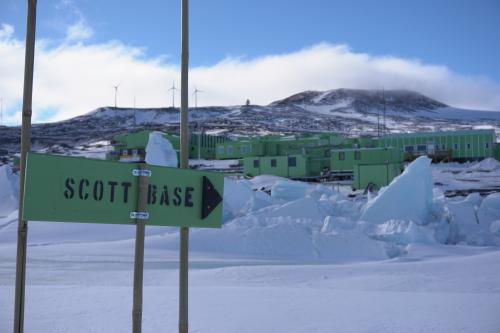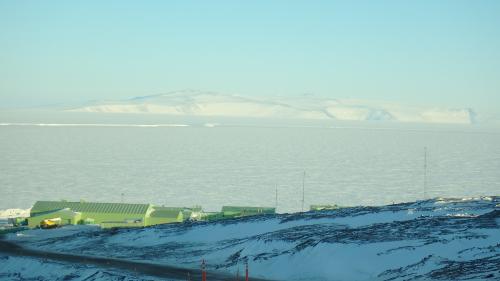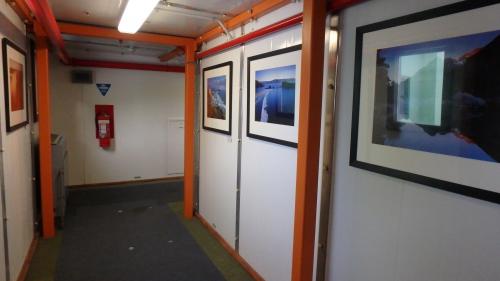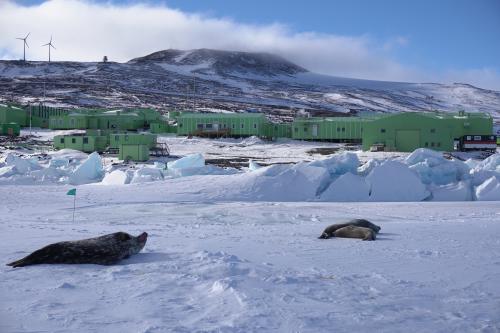
While there are thirty countries with research stations in Antarctica, it's still a big, lonely continent, so it's nice to have neighbors here on Ross Island. The Government of New Zealand operates Scott Base, the year-round station just on the other side of Observation Hill. Like many of the stations in Antarctica, Scott Base has its beginnings during the International Geophysical Year (IGY) of 1957/58, the first coordinated effort by the international community to study the continent scientifically. Sir Edmund Hillary lead a team that established Scott Base as the ultimate destination of the Commonwealth Trans Antarctic Expedition lead by Sir Vivian Fuchs in 1958. Hillary's "hut" remains to this day, and is maintained by the Antarctic Heritage Trust, though Scott Base has grown considerably since then.
 Scott Base's location on Pram Point affords it stunning views of McMurdo Sound and White Island.
Scott Base's location on Pram Point affords it stunning views of McMurdo Sound and White Island.
Today, Scott base is home to 85 permanent summer residents and supports research programs and field camps in New Zealand's Antarctic claim, the Ross Dependency. Contrasting the utilitarian layout and architectural feel of McMurdo Station, Scott Base is a throughly planned facility. Modular buildings are installed at regular distances (for fire safety reasons) and connected by corridors which largely eliminate the need to venture out into the cold. Separate modules house the dining hall and kitchen, administrative offices, workshops, laboratories, recreation room, warehouse, and dormitory. The base itself is powered by three 350 kw wind turbines located on the heights above.
 Scott Base's modular design permitted efficient construction and seamless expansion.
Scott Base's modular design permitted efficient construction and seamless expansion.
On Thursday evenings, Scott Base hosts "American Night," an open invitation for McMurdo residents to visit the Base's store and recreation room. I've been impressed by the facility's tidy, modern, and efficient layout. Its location on Pram Point below Mt. Erebus - overlooking the sea ice pressure ridges, White Island, and the expanses of the Ross and McMurdo ice shelves - is powerful. And of course there's the Chelsea cucumber green uniform paint scheme, for which I've heard many inconsistent explanations. One other immediate observation - one that I haven't arrived at anywhere else during my time at the much larger McMurdo Station - is that Scott Base's corridors are lined with landscape photos of New Zealand. Even with dramatic views of Antarctica visible from nearly every window, I suppose it's nice to be reminded of the beauty of home.
 Weddell seals rest on the sea ice just out side of the pressure ridges, clearly unimpressed by the Base's Chelsea cucumber color scheme.
Weddell seals rest on the sea ice just out side of the pressure ridges, clearly unimpressed by the Base's Chelsea cucumber color scheme.

Comments